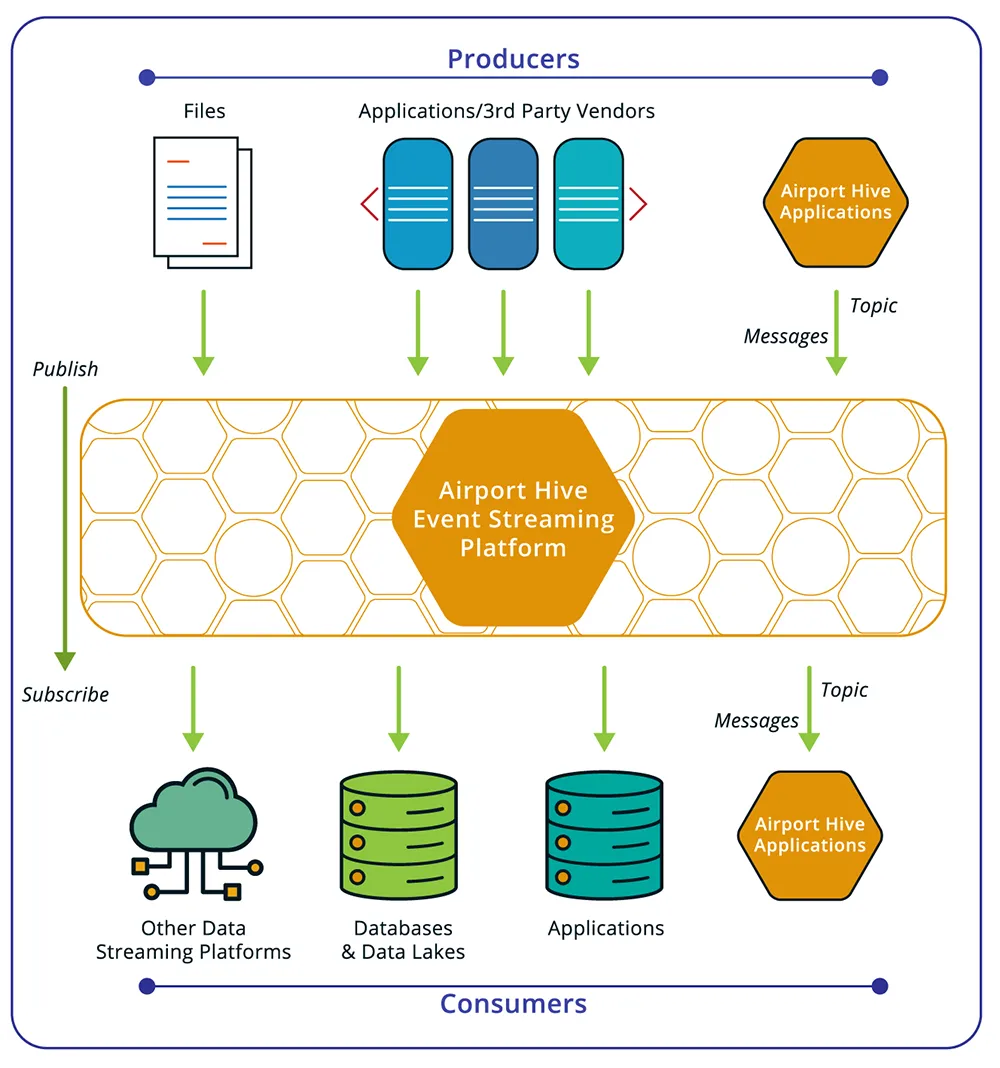An AODB is considered the most critical system operating an airport, also known as the brain. We believe the fundamentals of this brain have changed, from one brain to many focused brains all sharing information intelligently. Event streaming is the key to fundamentally transform airport operations.
The DB in the acronym AODB no longer stands for one huge relational database (one brain). It is transformed into many data stores contained within smaller microservices all communicating to each other using modern methods such as event streaming and REST APIs.
An event driven microservices AODB architecture transforms how airports manage operations thanks to its event streaming capability. Unlike traditional batch processing, which collects and analyses data at set intervals, event streaming allows for real-time processing. This means that as soon as events occur, it is instantly published on a topic for the subscribed consumer systems.
How Event Streaming Works in a Modern AODB
All components of the AODB “publish to” and “consume from” an event streaming platform via topics, enabling seamless collaboration across internal and external systems. This means event changes such as flight updates are immediately synchronised to all consumers.
The topics are configured with specific operational or system information which provides the airport with complete transparency and control of their data. Something which has been very difficult, time consuming and costly to manage with legacy monolithic AODB.
Benefits for Your Airport
Real-time event streaming significantly benefits airport operations in several key ways:
Scalability & Flexibility: A cloud-based, event streaming AODB allows airports to scale effortlessly, integrating new technologies and adapting to evolving operational needs.
Enhanced Operational Efficiency: By providing instant insights into various operational aspects, real-time data helps airports optimise resource allocation, streamline processes, and reduce delays. This leads to more efficient use of facilities and personnel, improving overall operational performance.
Improved Passenger Experience: Real-time data allows airports to offer personalised information to passengers, such as accurate wait times and travel updates. This enhances passenger satisfaction by reducing stress and improving communication.
Predictive Maintenance and Cost Savings: Real-time analytics enable predictive maintenance, reducing equipment downtime and operational costs. This proactive approach also helps in minimising delays and cancellations, further enhancing operational efficiency.
Collaboration Across Stakeholders: Real-time data platforms serve as a unifying tool for airlines, ground handlers, security teams, and airport management. This facilitates coordinated decision-making and more effective collaboration among stakeholders.
Competitive Advantage: Airports that leverage real-time operations can differentiate themselves in a competitive market, potentially attracting more airlines and passengers by offering superior operational efficiency and passenger experiences.
Airport Hive Event Streaming Platform

Airport Hive AODB – Event Streaming Platform
If you’re thinking about replacing your existing AODB then make sure it has an event streaming platform at it’s core like our Airport Hive AODB to manage the data between the many systems both internally and externally in an intelligent way.










